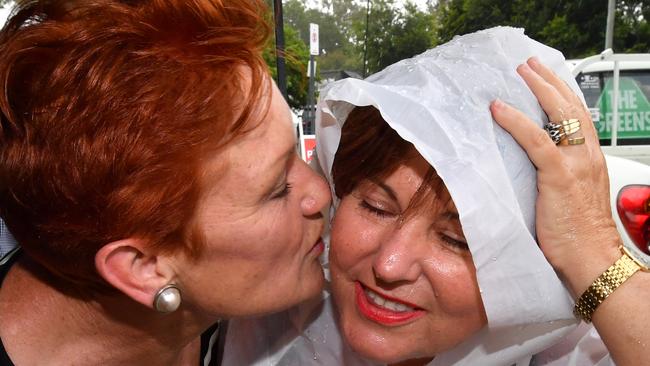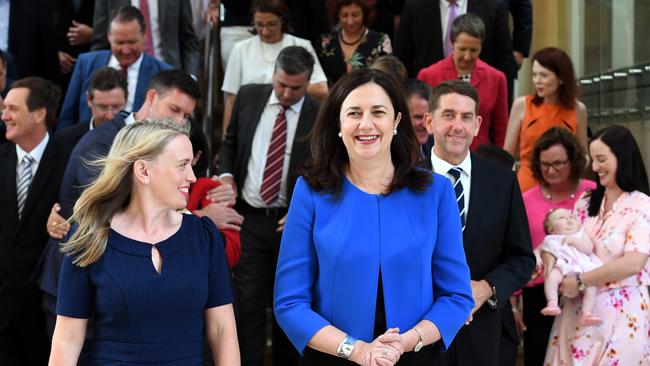Queensland election results 2017: LNP’s dramatic drop in support
THE LNP’s rapid drop in support happened just about everywhere in Queensland, but coast-to-coast Labor governments could work in Malcolm Turnbull’s favour, writes Dennis Atkins.
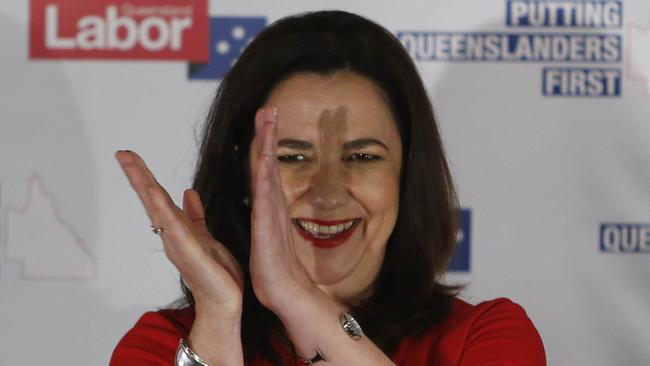
QLD Election
Don't miss out on the headlines from QLD Election. Followed categories will be added to My News.
ACCORDING to late Friday figures from the Electoral Commission Queensland, between January 2015 and November this year about 175,000 voters left the LNP.
This is despite the available voting population on the electoral roll increasing by about 150,000.
To go from 1,084,000 to 911,000 is a case of extreme electoral carelessness.
Labor, meanwhile, dropped its vote share from 983,000 to 957,000.
Sure, the recent Queensland election was one at which the major parties were on the nose, and no one maintained the voter numbers from the last election.
However the incumbent Labor Government, which should have suffered the most in such circumstances, lost just 25,000 voters.

The LNP lost support just about everywhere. It lost voters and seats on the Gold Coast, where it had been dominant since the Peter Beattie era, it lost support in Brisbane’s middle-ground suburbs, and it lost support in their traditional heartland, the leafy western suburbs of Brisbane, where a prized LNP seat fell to the Greens.
The LNP lost support in the “exurbs”, those outer suburbs that once provided the backbone for successive John Howard victories.
It also lost some support in provincial towns and the regions to Labor MPs who should have fallen on election night, and to the real new force outside the southeast, Katter’s Australian Party.
Granted, the LNP did win seats outside the southeast, but it underperformed, which is one of the reasons it didn’t ever seriously challenge Labor.
Labor more than compensated for its minimal losses outside Brisbane by driving into LNP territory around the capital and on the Gold Coast.
One Nation repeated its unimpressive West Australian performance from early this year, picking up a swag of votes in Queensland – about 14 per cent statewide – but translating that into just one seat, the one-time Labor mining heartland seat of Mirani.
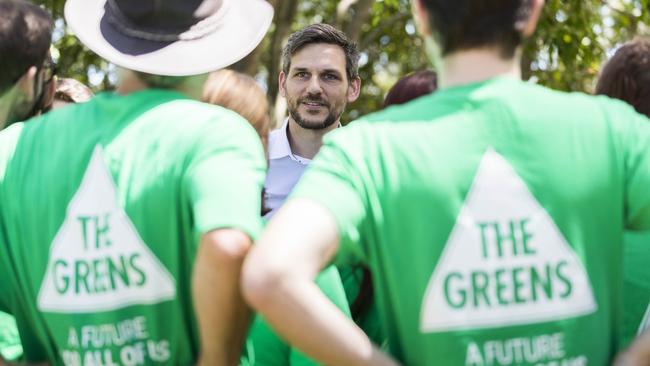
The party has a very narrow base, which tops out at about 20 to 25 per cent in its best seats, but when it is starved of preferences this is not even near enough.
The Greens couldn’t get close to Labor’s Jackie Trad in South Brisbane, despite a primary vote into the 30s, because Labor and the LNP traded preferences.
One Nation has to either expand its base – which is just not going to happen – or it will fade into smaller and smaller obscurity.
Talk of One Nation getting a Senate seat at the next federal poll is very premature.
The underlying story of this election, apart from the truly appalling performance of the LNP, was the historically low primary vote for the major parties.
They managed about 70 per cent between them – roughly 37 for the ALP and 33 for the LNP – which is about where the national opinion polls put support for Labor and the Coalition.
At previous Queensland elections this was balanced out by optional preferential voting, which saw many of those “other” votes exhausted.
This time the major parties both benefited and lost out from the compulsory allocation of preferences. The preferential system does tend to provide enough swings and roundabouts to produce a pretty fair result.
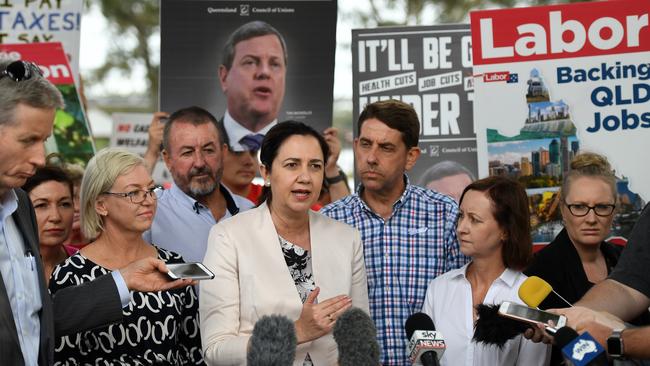
Those gaming the next federal election, which could be 12 to 18 months away, can take two possible lessons from Queensland.
Those LNP members wanting to be returned to Canberra can take some comfort from the return of the Palaszczuk Government, as an incumbent Labor administration at a state level does reduce the swing against a sitting national Coalition government.
If the Berejiklian Government in New South Wales is defeated next year and Labor is returned in South Australia and Victoria, Malcolm Turnbull will have the ALP in power coast to coast, allowing him to breathe a little easier.
The other feature of the Queensland poll that could play out federally is what happens in regional and provincial electorates with a very low primary vote for the majors and compulsory preferential voting.
Expect more three- and four-cornered contests, with a potentially strong showing from KAP in a few seats.
The sentiments that seemed hard to track in Queensland last month are not finished yet.
Dennis Atkins is The Courier-Mail’s national affairs editor
Originally published as Queensland election results 2017: LNP’s dramatic drop in support

